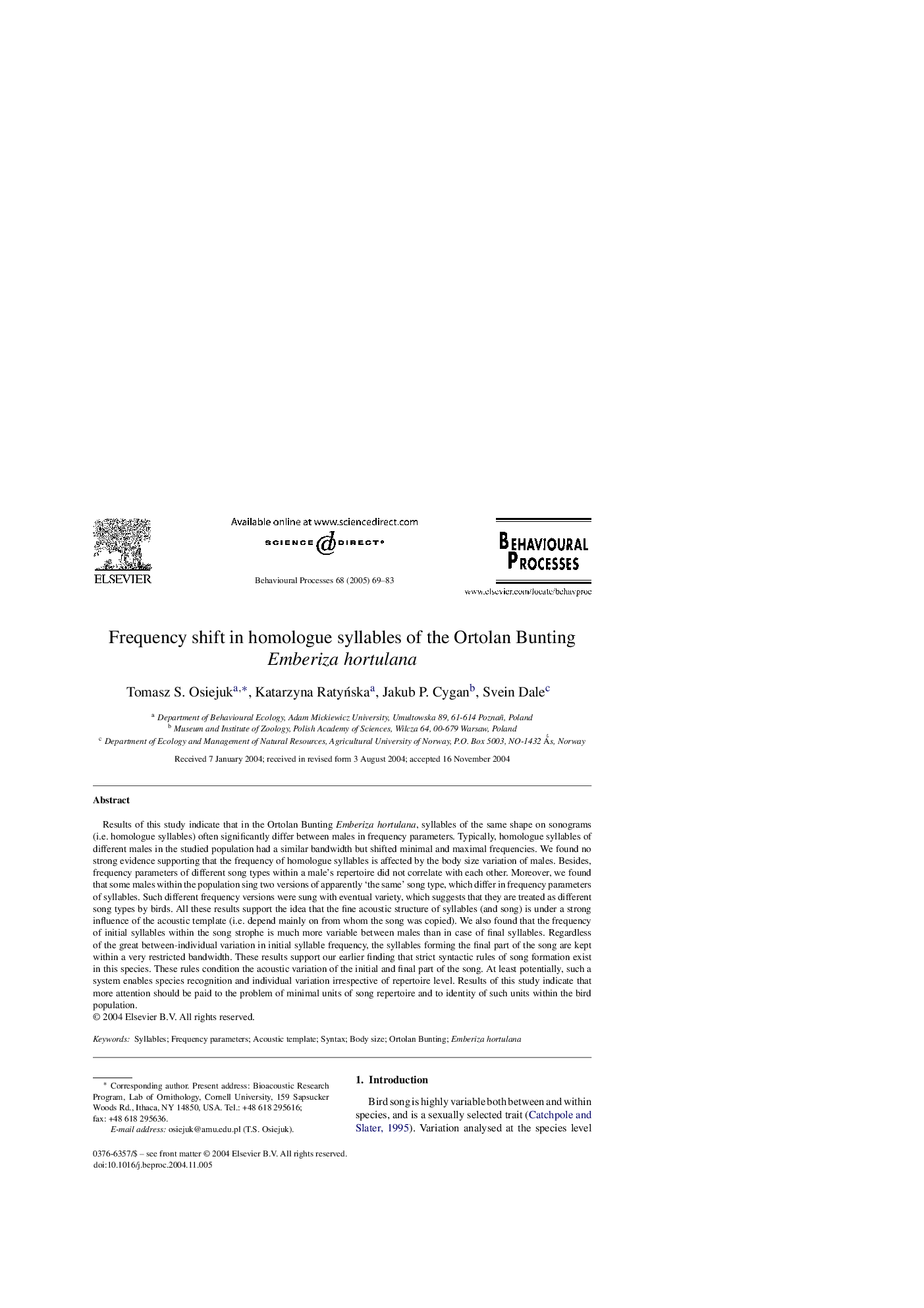| Article ID | Journal | Published Year | Pages | File Type |
|---|---|---|---|---|
| 8977421 | Behavioural Processes | 2005 | 15 Pages |
Abstract
Results of this study indicate that in the Ortolan Bunting Emberiza hortulana, syllables of the same shape on sonograms (i.e. homologue syllables) often significantly differ between males in frequency parameters. Typically, homologue syllables of different males in the studied population had a similar bandwidth but shifted minimal and maximal frequencies. We found no strong evidence supporting that the frequency of homologue syllables is affected by the body size variation of males. Besides, frequency parameters of different song types within a male's repertoire did not correlate with each other. Moreover, we found that some males within the population sing two versions of apparently 'the same' song type, which differ in frequency parameters of syllables. Such different frequency versions were sung with eventual variety, which suggests that they are treated as different song types by birds. All these results support the idea that the fine acoustic structure of syllables (and song) is under a strong influence of the acoustic template (i.e. depend mainly on from whom the song was copied). We also found that the frequency of initial syllables within the song strophe is much more variable between males than in case of final syllables. Regardless of the great between-individual variation in initial syllable frequency, the syllables forming the final part of the song are kept within a very restricted bandwidth. These results support our earlier finding that strict syntactic rules of song formation exist in this species. These rules condition the acoustic variation of the initial and final part of the song. At least potentially, such a system enables species recognition and individual variation irrespective of repertoire level. Results of this study indicate that more attention should be paid to the problem of minimal units of song repertoire and to identity of such units within the bird population.
Related Topics
Life Sciences
Agricultural and Biological Sciences
Animal Science and Zoology
Authors
Tomasz S. Osiejuk, Katarzyna RatyÅska, Jakub P. Cygan, Svein Dale,
